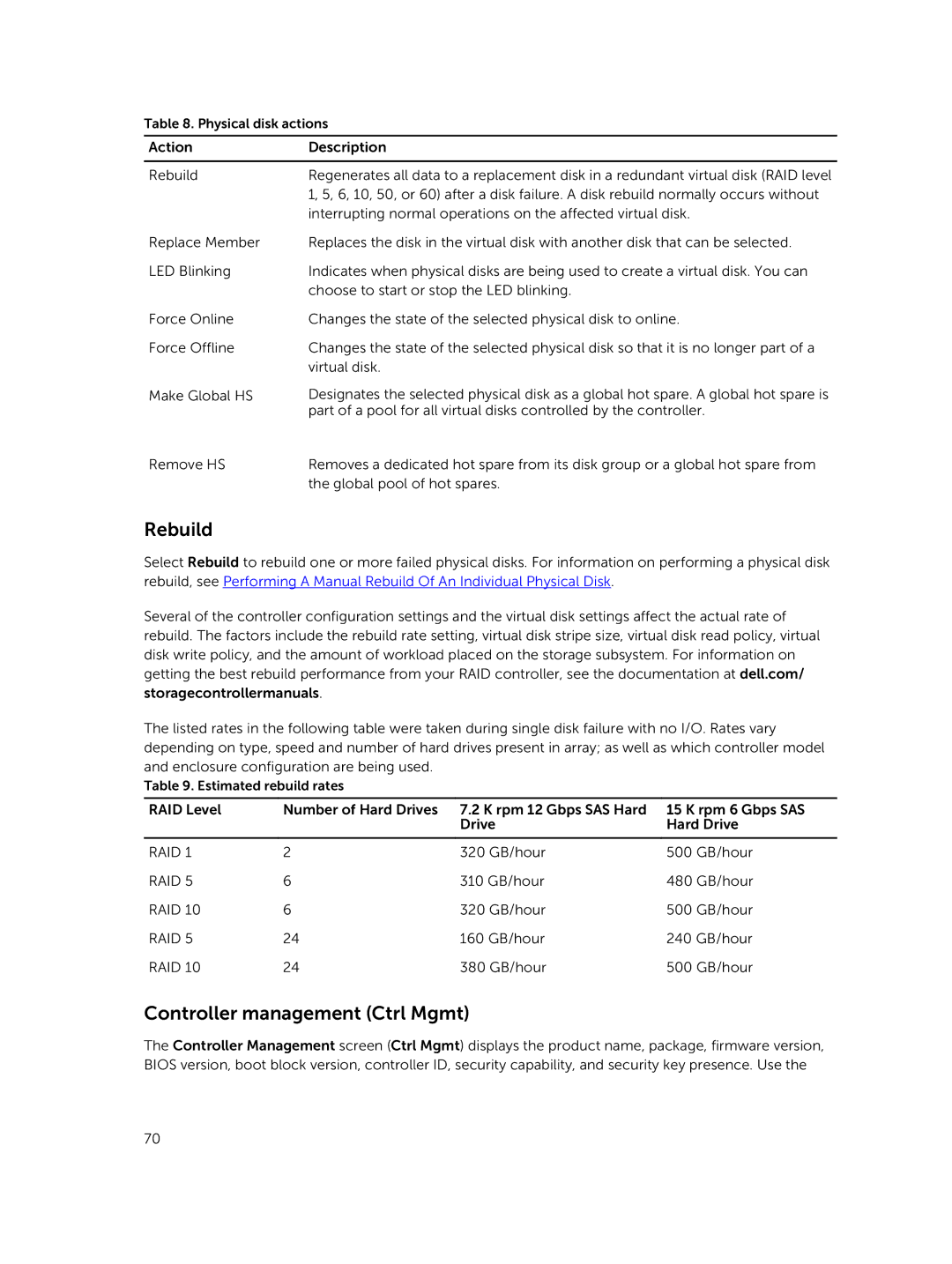
Table 8. Physical disk actions
Action | Description |
|
|
Rebuild | Regenerates all data to a replacement disk in a redundant virtual disk (RAID level |
| 1, 5, 6, 10, 50, or 60) after a disk failure. A disk rebuild normally occurs without |
| interrupting normal operations on the affected virtual disk. |
Replace Member | Replaces the disk in the virtual disk with another disk that can be selected. |
LED Blinking | Indicates when physical disks are being used to create a virtual disk. You can |
| choose to start or stop the LED blinking. |
Force Online | Changes the state of the selected physical disk to online. |
Force Offline | Changes the state of the selected physical disk so that it is no longer part of a |
| virtual disk. |
Make Global HS
Remove HS
Designates the selected physical disk as a global hot spare. A global hot spare is part of a pool for all virtual disks controlled by the controller.
Removes a dedicated hot spare from its disk group or a global hot spare from the global pool of hot spares.
Rebuild
Select Rebuild to rebuild one or more failed physical disks. For information on performing a physical disk rebuild, see Performing A Manual Rebuild Of An Individual Physical Disk.
Several of the controller configuration settings and the virtual disk settings affect the actual rate of rebuild. The factors include the rebuild rate setting, virtual disk stripe size, virtual disk read policy, virtual disk write policy, and the amount of workload placed on the storage subsystem. For information on getting the best rebuild performance from your RAID controller, see the documentation at dell.com/ storagecontrollermanuals.
The listed rates in the following table were taken during single disk failure with no I/O. Rates vary depending on type, speed and number of hard drives present in array; as well as which controller model and enclosure configuration are being used.
Table 9. Estimated rebuild rates
RAID Level | Number of Hard Drives | 7.2 K rpm 12 Gbps SAS Hard | 15 K rpm 6 Gbps SAS |
|
| Drive | Hard Drive |
|
|
|
|
RAID 1 | 2 | 320 GB/hour | 500 GB/hour |
RAID 5 | 6 | 310 GB/hour | 480 GB/hour |
RAID 10 | 6 | 320 GB/hour | 500 GB/hour |
RAID 5 | 24 | 160 GB/hour | 240 GB/hour |
RAID 10 | 24 | 380 GB/hour | 500 GB/hour |
Controller management (Ctrl Mgmt)
The Controller Management screen (Ctrl Mgmt) displays the product name, package, firmware version, BIOS version, boot block version, controller ID, security capability, and security key presence. Use the
70
